What is My Diamond Worth?
Our Diamond Value Calculator compares your diamond to our database of over 200,000 certified diamonds currently on the market.
Diamond Value Calculator
How do you determine a diamond’s value?
A diamond’s value is determined by rarity and market demand. Many factors go into a diamond’s rarity, but the most important is the “4 C’s”: color, cut, clarity and carat weight. There are many other factors that play into how much you can expect to receive when selling or using your diamond as collateral for an asset-based loan, which we will discuss below.
Diamond Carat Weight
A “carat” is a measurement unit that is used to measure weight and does not refer to the dimensions of a diamond. Many jewelers will also refer to a diamond’s weight in terms of points. For example, they will call a .70 carat diamond a 70 pointer. A point is a subunit of a carat, much like cents are a subunit of dollars. 100 points = one carat, just like 100 cents = $1.00.
Carat weight affects diamond worth in an exponential manner. You might expect a 2-carat diamond to be twice the value of a 1-carat diamond with equal cut, color and clarity, but it is actually closer to four times as costly. This is because larger diamonds are significantly more rare than smaller diamonds, and therefore more valuable.
It’s important to remember that a carat is the measurement of weight, not dimension. The shape and cut may make one diamond appear larger than another of equal carat weight.
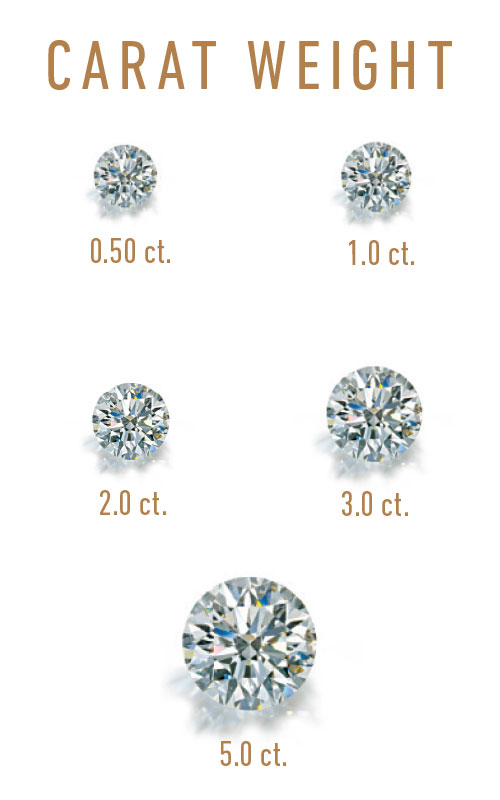
Diamond Color
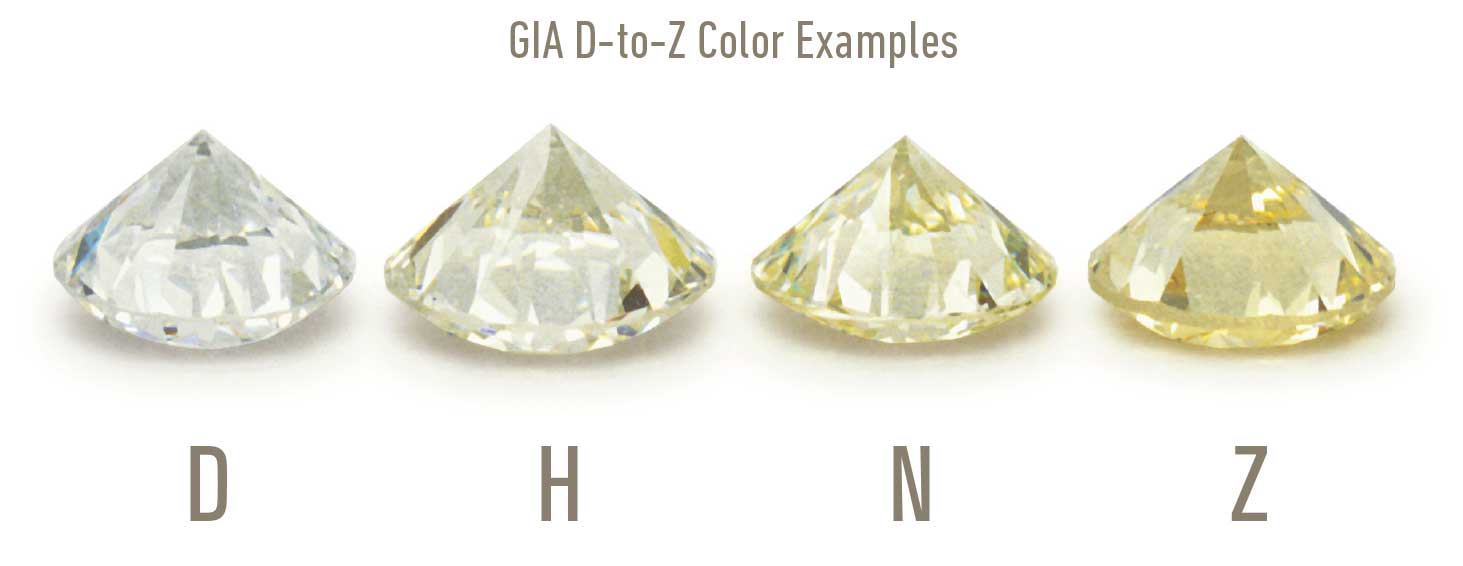
When talking about diamond color, the most important aspect is actually the lack of color. A diamond’s color refers to the natural warmth that often occurs in diamonds. Diamonds are ranked based on their color from D to Z, with D being absent of color and Z having the most warmth. As the scale continues each diamond has slightly more and more visible color or warmth.
D – F (Colorless)
Diamonds with a D color grade are completely colorless and very rare. Diamond with E or F color grade has a very small hint of warmth that can only be detected by an expert.
G – J (Near Colorless)
These near colorless diamonds will show virtually no color when mounted in a setting. This color range offers a great value for a very white diamond.
K – M (Faint)
These color grades are average and will have a slight warmth that can be detected by the untrained eye.
N – Z (Very Light and Light)
Diamonds that fall in this color range are used less frequently in jewelry unless the design is trying to achieve a pale to light yellow color. Without the proper tools, it is very difficult to see the difference between Colorless and Near Colorless diamonds, especially if the diamond is set in a ring. So deciding the diamonds worth, in this case, can be challenging. A major difference between the D, E, and F diamonds and the G, H, I, and J diamonds is the price difference. Just like with carat weight a D-graded diamond is exponentially more expensive than a J-graded diamond due to rarity.
Fancy Colored Diamonds
Before finding the answer to the question what are diamonds worth, you should find the answer to what happens when a diamond falls outside of the Z color grade? That’s when we get into the fancy yellow diamonds, sometimes referred to as canary diamonds. These gorgeous yellow beauties are naturally occurring. However, there aren’t too many yellow diamonds. In fact, they are so rare that only 1 carat of fancy yellow diamonds is found for every 10,000 carats of diamonds mined.
Yellow isn’t the only fancy colored diamond. Diamonds come in every color of the rainbow but are very rare and their value reflects this rarity and that’s what can help in finding what diamonds are worth. The rarest diamond color on earth is red, followed by blue, pink, orange, green, yellow, white, grey, black, and finally brown. These fancy colored diamonds are graded on a different scale than white diamonds. They are graded by the intensity or saturation of the color and rank from fancy vivid (the highest grade), fancy intense, fancy, and fancy light.
Diamond Clarity
A diamond’s clarity is in reference to the number, size, type, and degree of visibility of flaws or inclusions in a diamond. Sometimes referred to as internal characteristics, these inclusions occur naturally in the diamond and are similar to a birthmark. The diamond clarity scale ranges from Flawless (FL) to Included (I1 – 13).

A Flawless (FL) graded diamond means there are absolutely no internal characteristics visible, even under intense magnification. This type of diamond is extremely rare as inclusions are a normal part of diamond formation, making FL diamonds among the most costly diamonds on the market.
An Internally Flawless (IF) grade means there are just surface imperfections and there are no inclusions in the internal structure of the diamond that could interfere with the faceting and therefore the diamonds sparkle.
Very Very Slightly Included (VVS1 – VVS2) diamonds will have slight inclusions that can only be seen under intense magnification and not with the naked eye.
VS1 and VS2 diamonds (Very Slightly Included) have more inclusions, but again you won’t be able to see them without magnification.
Diamonds that are Slightly Included (SI1 and S12) will have inclusions that can be seen with the naked eye, without magnification, but they are not as obvious to spot as the last grade level: Included (I1 – I3).
Whether or not you can see the inclusions at the different grade levels is more of a guideline for consumers and not an exact determining factor for a diamond’s grade. Whether you can see an inclusion will depend on your eyesight and ability to spot imperfections as well as the type of inclusion present in the diamond. But this approach is going to help you a lot if you are wondering how much is a diamond worth.
Diamond Cut
The cut of a diamond refers to its proportions and not the shape. Cut solely determines the diamond’s brilliance or its sparkle and is the most important factor to consider when evaluating a diamond. If color, clarity, and carat weight are the same, the cut alone can affect the value as much as 15-20%.
When cut properly, the light should enter the diamond through the crown and table. The light then should reflect off the facets and return back out the crown. This process is what gives a diamond the desired brilliance or sparkle. If the diamond is cut too shallow, the light will fall out of the bottom. When the diamond is cut too deep, the light will fall out of the side instead of refracting up to the top.
Round Brilliant diamonds are the only shape of diamond that is graded on the cut scale. This is because exact perfect proportions have been agreed upon in the industry. Other diamond shapes have ideal or recommended proportion ranges. The cut scale ranks diamonds from Excellent to Poor, with most jewelry caliber diamonds falling in the Good, Very Good, or Excellent cut grades. Always use this information while trying to find how much is a diamond worth.
Diamond Shape
A diamond’s shape can be a huge factor in determining the diamond worth. Just like all things in fashion, a specific diamond shape’s popularity can wax and wane. For example, princess-shaped diamonds were very popular in the 1980s, but are not very popular now so their relative value has decreased within the market. The diamond shape that has held the most consistency over time is the round brilliant. Always a popular choice, they may be the most common diamond shape in the market, but they are also the most in-demand so they retain their value well.
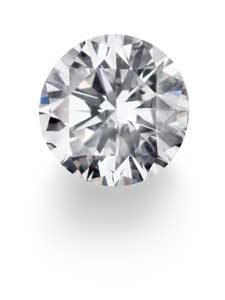
Round: The most popular type of round diamond is the round brilliant. The symmetry of the 58 facets in a round brilliant diamond makes it arguably the most sparkly of all diamond shapes. In fact, they are so popular that they account for over 75% of all diamonds sold today. There are some other vintage types of round-shaped diamonds whose popularity has increased in recent years, like the rose cut, Old Euro (European), or Old Mine Cut.
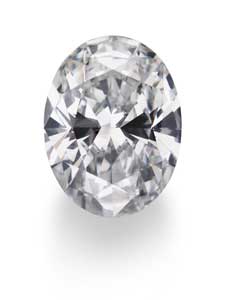
Oval: Frequently cut in a brilliant style, same as the round brilliant, ovals have sparkle all their own. Very popular for individuals wanting that dazzling look but also want a shape that flatters and elongates their fingers.
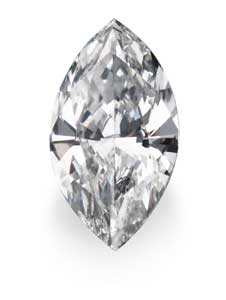
Marquise: Sometimes referred to as the football shape, it was actually named after a mistress of King Louis XV of France. The way Marquise diamonds are cut causes them to appear larger than other diamond shapes that are the same carat weight. Symmetry is also very important in Marquise since any discrepancy in symmetry can be very noticeable to the human eye.
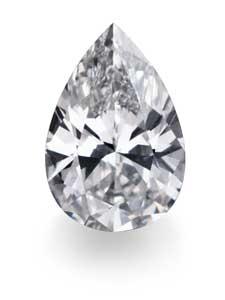
Pear: Also called a teardrop, it’s the perfect combination of round and marquise shapes. You get the brilliance of the round and the illusion of the larger carat weight of a marquise. This shape also has a very slimming effect on the hand.
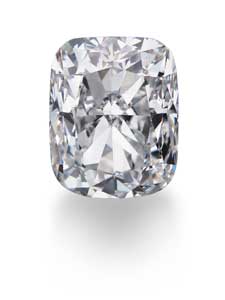
Cushion: Diamonds that are a cushion shape are square with rounded corners. They can be perfect squares or rectangles and are also called “pillow-cut” diamonds. A rectangle cushion shape diamond may be more flattering and elongating on the finger than a square. The cushion shape usually has 58 brilliant facets. A “brilliant” facet pattern means the facets radiate from the center to the edge of the diamond. Cushions are known for having larger facets than most other shapes, which makes them sparkle and shine extra brilliant and you might come across these types of diamonds while trying to find what are diamonds worth.
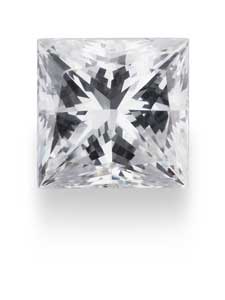
Princess: A relatively new diamond shape — the princess was created in 1981. Diamonds that are princess-shaped are square with sharp corners. They are shaped like an upside-down pyramid. The square face is faceted, which gives princess cut diamonds their radiance. The most beautiful princess diamonds are squares with perfect proportions. Since it’s easy to tell when a square is unbalanced, princess-shaped diamonds with uneven sides look strange to the eye. With their angular lines and relatively new status, princess-shaped diamonds are considered a modern choice for engagement rings.
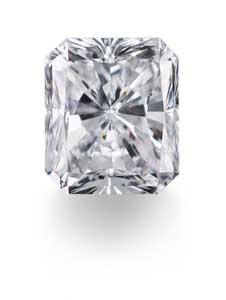
Radiant: These can be either square or rectangular in shape with cut corners. They are brilliant cut and have an amazing radiance. They can be more durable than other square-shaped diamonds because they have cut corners they are less prone to chipping. Not very popular, this diamond shape is not commonly seen in today’s jewelry styles.
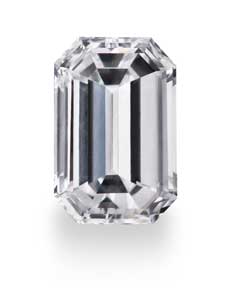
Emerald: The emerald-shaped diamond is a rectangle shape. It is like looking into a pool of water with the step cuts being the ripples in the surface. You can see deep into the diamond and this cut is often most popular with diamonds that have excellent clarity. Since you can see more clearly into the diamond if there were any imperfections they would be easier to detect without the use of magnification. Very popular in the early 1900s this shape also gives jewelry a vintage feel.
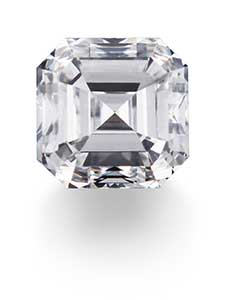
Asscher: Similar to an emerald-shaped diamond it also is step cut, however, it is a square shape with cut corners that gives the diamond a very unique sparkle pattern. Very popular during the Art Deco period this shaped diamond is often found in vintage jewelry and paired with sapphire or emerald accent stones.
These are the most common diamond shapes. However, just like everything else diamonds have been customized into some truly unique shapes like hearts, trillions, half moons, and even stars.
Other Diamond Evaluation Factors
DIAMOND POLISH & SYMMETRY
A diamond’s polish grade refers to the smoothness of the facets on a diamond. After a diamond is cut, it is polished. A smooth glass-like surface allows for the lightest refraction and therefore the most sparkle. While inclusions naturally occur in diamonds, polish marks are a result of human error in the finishing process. Diamond polish is graded from Excellent to Poor based on the appearance of microscopic surface imperfections such as tiny scratches and abrasions.
Symmetry is also graded from Excellent to Poor based on things like misshapen or an odd number of facets, an uneven girdle, or uneven angles. The more symmetrical a diamond is, the more evenly the light refracts creating more sparkle and making it more pleasing to the eye. Diamonds aren’t always cut perfectly symmetrical to appease other more important factors such as retaining carat weight or removing inclusions.
DIAMOND FLUORESCENCE
Fluorescence is caused by the presence of nitrogen as a trace elemental impurity in a diamond. Diamonds are composed of carbon atoms organized in a lattice-like crystal structure. Sometimes some carbon atoms are missing in the lattice. These single or multiple vacancies may each be filled by a nitrogen atom. For example, a single nitrogen atom trapped near a vacancy causes bright orange-yellow fluorescence. But most common in diamonds are three nitrogen atoms in lattice positions adjacent to a vacancy that cause blue fluorescence. In addition to color, fluorescence also varies by strength – from none, faint, medium, strong, and very strong, as described in grading reports. The fluorescence color and its intensity are additional characteristics that can help to identify a specific diamond.
The presence of nitrogen or other impure atoms in the diamond crystal structure does not have any influence on the hardness or durability of a diamond; however, fluorescence can have an impact on a diamond’s value. Even though it does not strongly impact a diamond’s appearance, in the market there is a premium placed on diamonds that have none to faint fluorescence because those diamonds are seen as more “perfect” and therefore in greater demand. Still, a diamond’s fluorescence has much less impact on a diamond’s value than other factors such as color and clarity. All this information can come in handy if you are trying to find out how much is a diamond worth.
DIAMOND CERTIFICATIONS
A diamond certification is a document containing third-party ratings of all the diamond valuation factors listed above. It won’t tell you the value of your diamond, but it will allow a jewelry buyer or an appraiser to compare it to other similar diamonds in the market. The person evaluating the diamond will still want to inspect it themselves for verification, but the certification can help with initial offers from buyers and significantly shorten the amount of time it takes to get a diamond appraised.
Not all diamond certifications and diamond grading labs are created equal. Inaccurate and liberal grading runs rampant in the diamond industry. Many for-profit laboratories will grade diamonds more liberally in order to appease their paying customers, jewelers. This can oftentimes result in a diamond that is represented to be of higher grades than it actually is, thus causing the consumer to believe their diamond is worth more than it actually is. There are two types of labs when it comes to grading diamonds: The Gemological Institute of America (GIA) and everybody else.
Gemological Institute of America (GIA)
The world’s undisputed authority of diamond grading. They are a not-for-profit lab and created the standard color and clarity grading scales that are now universally used. The GIA has graded items in the Smithsonian Institute and the crown jewels of England. The GIA uses industry-leading technology to give the most conservative grades possible, assuring the most accurate certifications. There is never a question when the diamond is graded by the GIA.
Here’s an example of the same diamond that has been graded by both the GIA and the EGL:
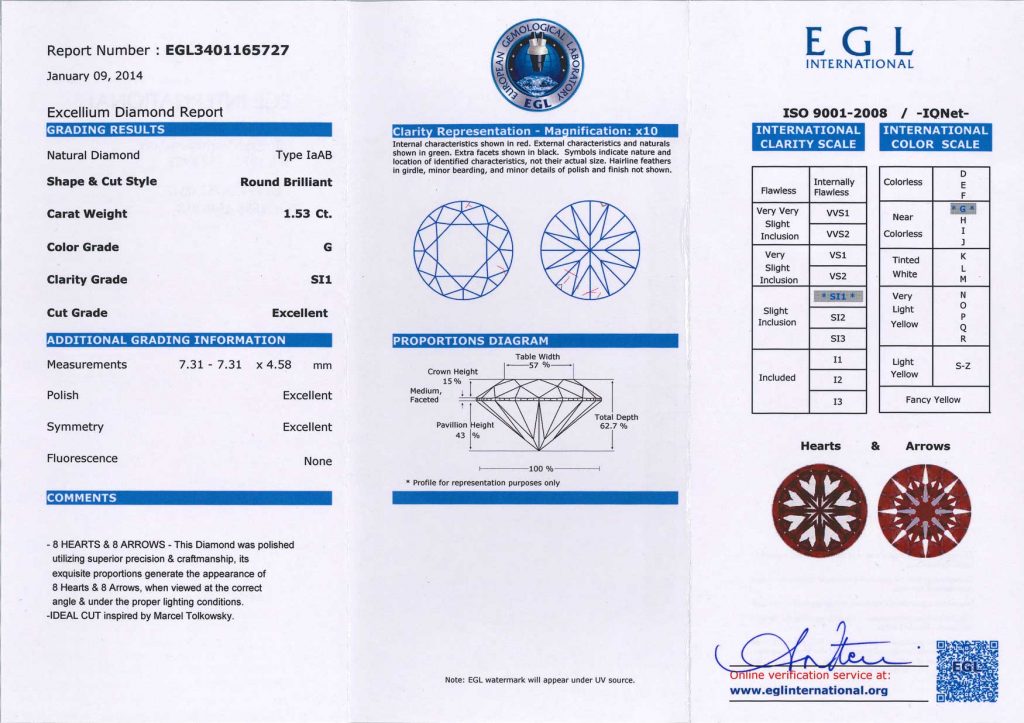
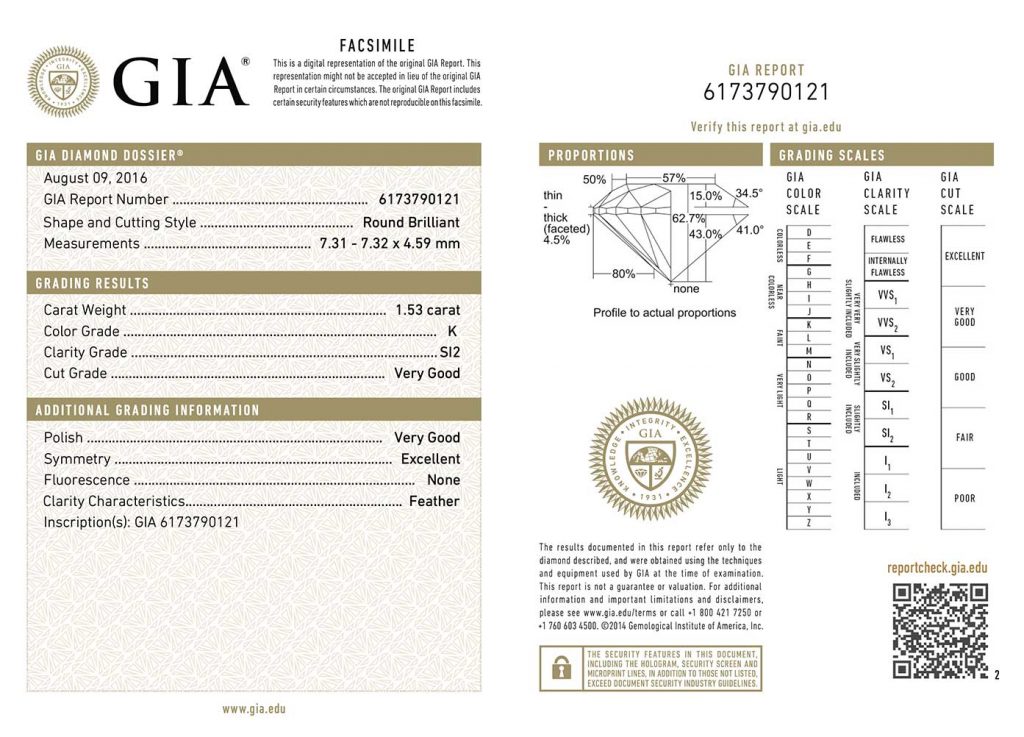
The discrepancy between the grades on the two certifications, with the EGL having much more liberal grades, amounts to a difference of about $3,500 on the wholesale market.
Other Diamond Grading Labs
Many are for-profit labs that have liberal grading practices that benefit the initial seller of the diamond (the retail jeweler). This leaves their evaluations open for debate due to issues with the lack of accuracy and consistency standards. Two of the most common grading labs you will encounter in the diamond industry other than the GIA are:
- European Gemological Laboratory (EGL): They are one of the world’s largest diamond grading companies and have offices around the world. They are a for-profit lab and you will find their certifications are very liberal. If a diamond is graded by the EGL and then sent to the GIA it will most likely receive lower grades.
- American Gem Society (AGS): The AGS is a not-for-profit grading lab. They adhere to the stricter grading practices and their grades are as close to a GIA evaluation as you can get without having a GIA certificate.
